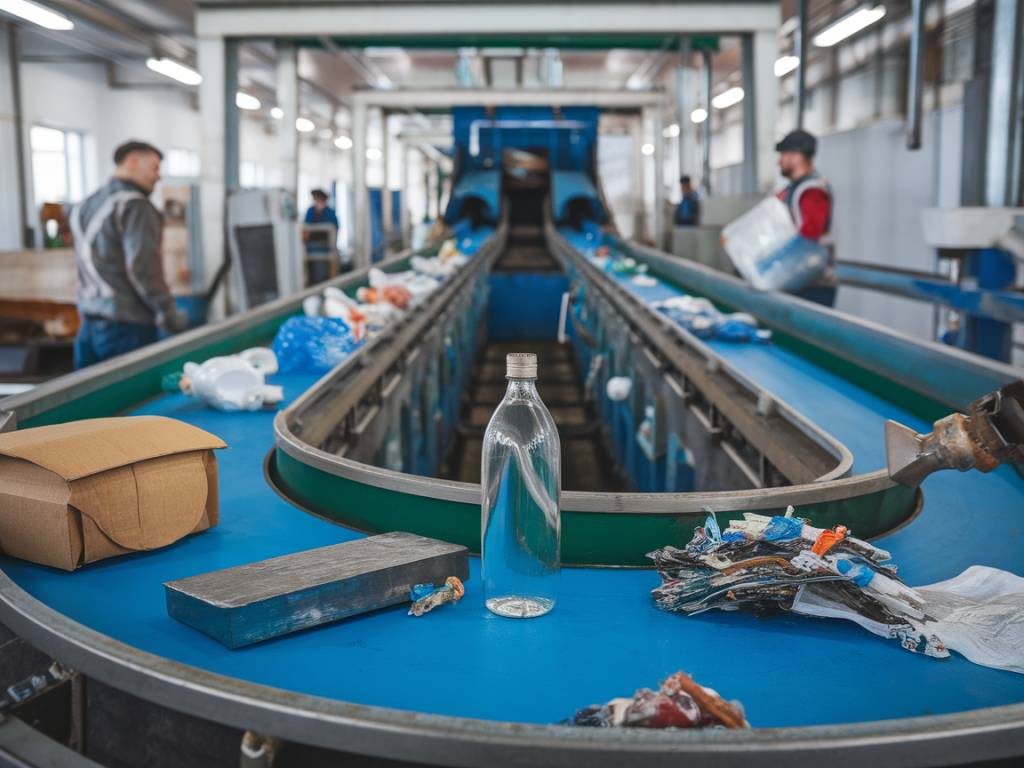The advent of the circular economy is fundamentally transforming various industries, and logistics is no exception. This innovative economic model stresses the importance of reusing, repairing, refurbishing, and recycling existing materials and products. As the momentum behind sustainable practices continues to grow, businesses are increasingly recognizing the need to adopt circular logistics strategies. This shift is driven by both ecological concerns and economic incentives, resulting in strategies that reduce waste and enhance value.
Understanding the Circular Economy in Logistics
The circular economy prioritizes resource efficiency and sustainability by extending the lifecycle of products. In the context of logistics, this translates into designing supply chains that are not only cost-effective but also environmentally responsible. Traditional linear logistics models, characterized by a « take-make-dispose » approach, are gradually being replaced by circular models that emphasize the perpetual use of resources.
By adopting a circular approach, logistics companies aim to minimize waste, reduce carbon footprints, and create value at each stage of the supply chain. This involves rethinking logistics operations to facilitate the return, refurbishment, and redistribution of products.
Key Drivers of Circular Logistics
The push towards circular logistics is driven by several factors, including environmental sustainability, regulatory pressures, and economic benefits.
Environmental Sustainability
One of the most significant drivers behind circular logistics is the growing emphasis on environmental sustainability. Companies are increasingly aware of their impact on the planet and are seeking ways to minimize their ecological footprint. By implementing circular logistics strategies, businesses can reduce resource consumption, lower greenhouse gas emissions, and promote sustainable practices.
Regulatory Pressures
Governments and international bodies are enacting stricter regulations to encourage sustainable practices and reduce waste. These regulations often mandate recycling and waste management initiatives, compelling companies to adopt circular logistics models. Compliance with such regulations not only avoids legal repercussions but also enhances a company’s reputation.
Economic Benefits
Circular logistics can lead to significant cost savings and economic benefits. By extending the lifecycle of products, companies can reduce raw material costs and lower waste disposal expenses. Additionally, circular models can create new revenue streams through the resale, refurbishment, and recycling of products.
Strategies for Implementing Circular Logistics
To successfully transition to circular logistics, companies must adopt a range of strategies that prioritize sustainability, efficiency, and innovation.
Reverse Logistics
Reverse logistics involves the process of moving products from the end user back to the manufacturer for reuse, recycling, or proper disposal. Implementing effective reverse logistics systems is crucial for the circular economy, as it enables the recovery of valuable materials and components. Companies must invest in robust reverse logistics infrastructure, including efficient processes for product returns, inspection, and refurbishment.
Product Lifecycle Management
Effective product lifecycle management (PLM) is essential for circular logistics. PLM involves managing the entire lifecycle of a product from design to disposal, with a focus on maximizing its value. By designing products for longevity and recyclability, companies can ensure that materials can be easily recovered and reused, reducing waste and resource consumption.
Collaboration and Partnerships
Collaboration is a key element of successful circular logistics. Companies must work closely with suppliers, customers, and other stakeholders to create integrated supply chains that support circular practices. Partnerships with recycling firms, refurbishment centers, and reverse logistics providers can enhance the efficiency and effectiveness of circular logistics operations.
Technological Innovations Supporting Circular Logistics
The adoption of advanced technologies is driving the evolution of circular logistics. Emerging technologies are enabling companies to optimize their supply chains, enhance resource efficiency, and implement sustainable practices.
Internet of Things (IoT)
The IoT has the potential to revolutionize circular logistics by providing real-time data and insights into supply chain operations. IoT devices can track the location and condition of products, monitor inventory levels, and optimize logistics routes. This data allows companies to make informed decisions, reduce waste, and improve overall efficiency.
Big Data and Analytics
Big data and analytics are essential tools for circular logistics. By analyzing large volumes of data, companies can identify patterns, predict demand, and optimize inventory management. Predictive analytics can also help forecast product returns, enabling better planning for reverse logistics processes.
Blockchain Technology
Blockchain technology can enhance transparency and traceability in circular supply chains. By providing a secure and immutable ledger of transactions, blockchain enables companies to track the movement of products and materials from production to disposal. This transparency ensures compliance with sustainability standards and builds trust among stakeholders.
Case Studies of Circular Logistics in Action
Several companies are leading the way in implementing circular logistics practices, demonstrating the tangible benefits of this approach.
Schneider Electric
Schneider Electric, a global leader in energy management and automation, has embraced circular logistics as part of its sustainability strategy. The company operates a comprehensive reverse logistics program that collects, refurbishes, and recycles end-of-life products. Schneider Electric’s circular approach has resulted in significant cost savings, reduced environmental impact, and a stronger commitment to sustainability.
H&M Group
The H&M Group, a multinational retail-clothing company, has implemented circular logistics to support its sustainability goals. The company’s initiatives include garment recycling programs, product take-back schemes, and partnerships with recycling firms. These efforts have helped H&M reduce waste, extend the lifecycle of products, and promote a circular economy in the fashion industry.
The Future of Circular Logistics
As awareness of environmental sustainability grows, circular logistics is expected to become an integral part of supply chain management. Companies will continue to innovate and adopt new technologies to enhance their circular logistics practices. Embracing the circular economy not only addresses pressing environmental concerns but also offers economic advantages and aligns with evolving regulatory requirements.
The transition to circular logistics requires a holistic approach that encompasses strategic planning, technological innovation, and collaboration across the supply chain. By embracing circular principles, companies can create resilient, sustainable, and economically viable logistics networks for the future.
Conclusion
The circular economy is reshaping the logistics industry in profound ways, driving companies to rethink their supply chain strategies and embrace sustainable practices. By prioritizing resource efficiency, implementing reverse logistics, and leveraging advanced technologies, businesses can successfully transition to circular logistics models. The benefits of circular logistics are numerous, including cost savings, reduced environmental impact, and enhanced competitiveness. As the demand for sustainability continues to rise, the adoption of circular logistics will play a critical role in shaping the future of the logistics industry.



